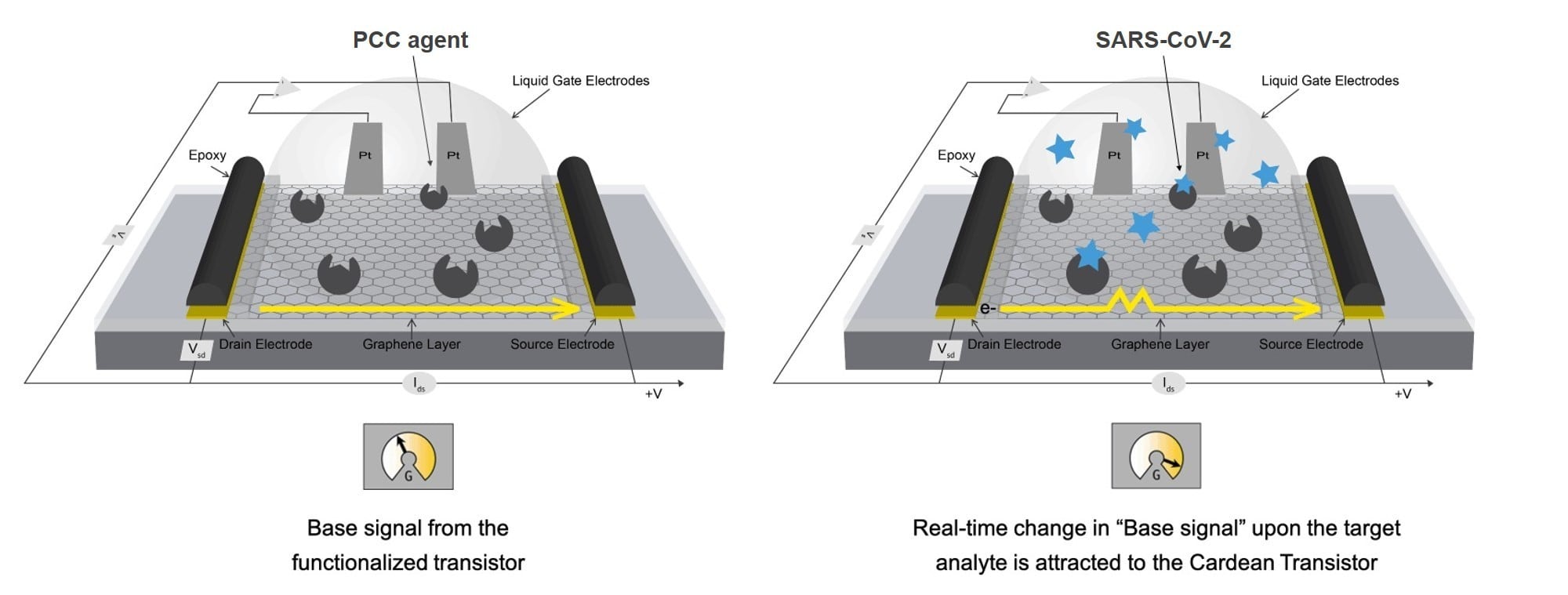Army scientists have teamed with the Defense Advanced Research Projects Agency and others to build a monitor that would detect COVID-19 proteins in the air.
The team of researchers includes Army scientists with the U.S. Army Combat Capabilities Development Command, Georgia Tech Research Institute, Cardea Bio and the University of Georgia, according to an Army statement.
The prototype sensor the group is developing would help detect the virus with enough speed and accuracy that users could prevent infection from spreading.
“Monitoring pathogens in the environment remains a challenging area of study,” said Dr. Matthew Coppock, Army chemist and team leader. “(Army Research Laboratory) has a unique capability to design and synthesize selective biosensor recognition elements using short synthetic peptides. …”
RELATED

Those peptides, short chains of amino acids linked by peptide bonds, mimic the way antibodies attach to the COVID-19 virus.
The team is taking the receptors produced during the past year of COVID response work. If successful the sensor could allow for a new way to monitor public health beyond the Department of Defense, such as monitoring for COVID at work sites, travel points and schools.
But the foundational work of what’s come together so far should have applications far beyond the COVID-19 virus. That’s because, with minimal variations, scientists anticipate they will be able to use the peptides, known as protein-catalyzed capture agents, for other diseases.
“This capture component ideally can be incorporated into any biological detection device, such as test strips or graphene-based detectors, like the one being developed,” Coppock said.
The PCCs can be used to rapidly address new biological threats. The use of PCC bio-detection technology was introduced by the Jim Heath Laboratory at the California Institute of Technology for a project with ARL, according to the statement.

Military Times reported in July that DARPA studies also monitored the airflow in various types of military aircraft to determine which posed the lowest threat of infection from coronavirus patients. The work measured the flow of coronavirus-sized particles to determine risk factors for those platforms and which aircraft would be preferable if needed for virus-laden transport.
DARPA spokesman Jared Adams told Military Times in an email response that the testing looked at six aircraft: C-17, KC-135, C-130J, C-5, KC-46 and KC-10.
“DARPA concluded that the aircraft with the most favorable airflow circulation was the KC-10, which provided complete protection to the front compartments through the use of directed airflow and smoke barriers,” Adams told Military Times.
Todd South has written about crime, courts, government and the military for multiple publications since 2004 and was named a 2014 Pulitzer finalist for a co-written project on witness intimidation. Todd is a Marine veteran of the Iraq War.




